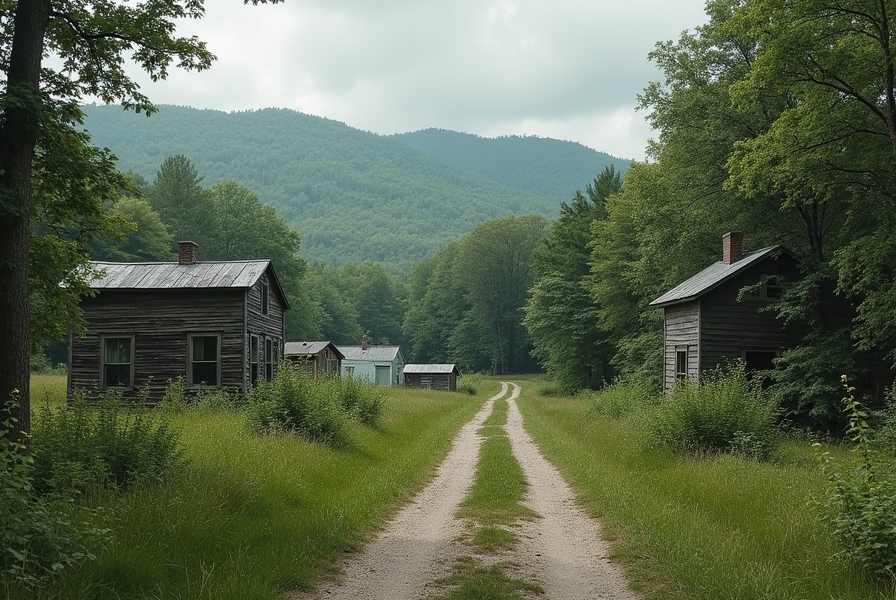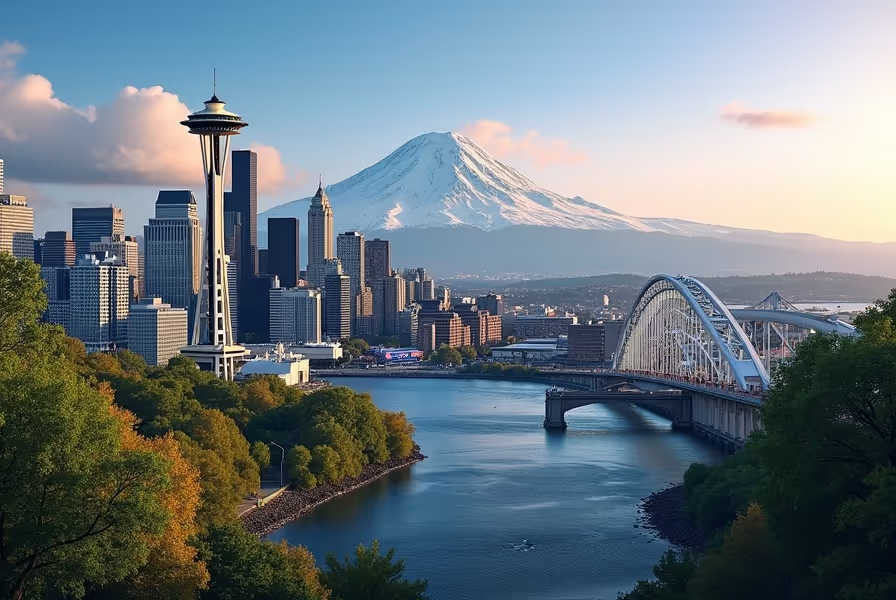The Allure of Vermont’s Abandoned and Forgotten Towns
Have you ever wondered if the scenic state of Vermont has hidden ghost towns? The Green Mountain State’s lush forests and quaint villages hold more than just natural beauty. Scattered across Vermont are the remnants of once-bustling communities that have faded into obscurity. Ghost towns in Vermont are rich in history, mystery, and unique local folklore.
Understanding the Concept of Ghost Towns in Vermont
In Vermont, a “ghost town” usually means an abandoned settlement or a formerly prosperous village left behind by its residents. Sometimes only a few structures remain, while other times you might just find cellar holes or old stone foundations blanketed in moss. Key reasons these towns were abandoned include:
- Economic shifts, like the decline of the timber or mining industries
- Changes to transportation routes (such as new railways bypassing towns)
- Natural disasters or resource depletion
- Societal shifts, such as the Civil War and westward migration
Famous Abandoned Towns and Sites in Vermont
While ghost towns in Vermont aren’t as dramatic as the Old West, certain locations offer glimpses into the past and the stories of people who once called them home. Here are some of Vermont’s notable abandoned towns and historic sites:
- Ricker Basin (Little River State Park)
Once a thriving logging community, Ricker Basin was abandoned by the 1920s. Today, nature trails reveal cellar holes and the stonework of former homes. - Glastenbury
Nestled in the Bennington County wilderness, Glastenbury was once a busy logging and charcoal-producing town. After industries dried up, the town faded, leaving just legends and wilderness. Glastenbury is often linked to strange tales and the so-called “Bennington Triangle.” - Somerset
Built around the timber industry, Somerset declined rapidly after the land was purchased for reservoir creation in the early 20th century. Vestiges of the town are still visible, and the area is popular with hikers. - Tyson Furnace
In the 1800s, this village supported an active iron works. All that remains now are stone ruins and foundations reminding visitors of Vermont’s industrial past.
What Makes Vermont’s Ghost Towns Unique Compared to Other States?
Unlike western ghost towns marked by tumbleweeds and visible deserted streets, Vermont’s abandoned settlements are often reclaimed by thick forests. You may not see “Main Streets” with empty saloons. Instead, you’ll spot cellar holes, rock walls, rusty relics, and gravestones tucked among the trees. The feeling is quietly haunting yet serene, giving hikers, amateur historians, and travelers a unique glimpse into 18th and 19th-century life.
Why Did People Leave These Vermont Villages?
Many Vermont ghost towns became deserted because the local economy couldn’t sustain a community. Here are some primary reasons:
- Harsh Winters and Farming Difficulties: The rocky soil and long winters made farming tough, pushing villagers to seek better agricultural lands elsewhere.
- Industrial Changes: The rise and fall of mills, charcoal kilns, and iron works meant some towns thrived briefly then faded fast.
- Transportation: When new railways or roads missed a settlement, businesses failed and people moved closer to better connections.
- Resources: Deforestation, poor planning, or over-mining often left little for residents to live on.
Can You Visit Ghost Towns in Vermont?
Many former towns are accessible to hikers, nature lovers, and history buffs. Sites like Little River State Park in Waterbury offer guided “ghost town” hikes, while others sit on public lands with marked trails. Always respect private property and local regulations, as some ruins are near hunting grounds or conservation areas.
When exploring:
- Check state park and forestry websites for information on historic trails.
- Wear sturdy shoes; expect uneven terrain.
- Bring a camera to capture foundations, cemeteries, and nature reclaiming the land.
- Leave artifacts and ruins undisturbed for future generations.
Are Ghost Towns in Vermont Haunted?
Vermont’s abandoned sites often inspire ghost stories and tales of local hauntings. Whether you believe in spirits or not, there’s no denying the spooky charm in an overgrown cemetery or the quiet foundation of a forgotten home at dusk. Towns like Glastenbury, especially, have become part of local folklore and the supernatural. Still, most visitors find these sites peaceful, thought-provoking, and perfect for connecting with New England’s past.
Most Popular Vermont Ghost Towns and Their Locations
- Ricker Basin: Inside Little River State Park, Waterbury
- Glastenbury: Woodlands northeast of Bennington
- Somerset: Southwestern Vermont, near Somerset Reservoir
- Tyson Furnace: Along Route 100 between Ludlow and Plymouth
- West Castleton: Ruins on Lake Bomoseen, tied to the old slate quarry industry
Each site provides a distinct flavor of Vermont’s industrial and rural history, ideal for those looking into the best places to find ghost towns in New England.
Frequently Asked Questions about Vermont Ghost Towns
How many ghost towns are in Vermont?
Vermont has dozens of known abandoned or partially abandoned towns and villages. Some, like Glastenbury and Somerset, are well documented. Others exist only as cellar holes and stone walls deep in the woods, forgotten by most modern maps.
Are Vermont ghost towns open to visitors?
Many ghost town sites in Vermont are on public land or in state parks. For example, Little River State Park features historic trails with interpretive signs. Some sites require backcountry hiking, and visitors should always observe posted rules and private property boundaries.
What is the most famous ghost town in Vermont?
Glastenbury is probably Vermont’s best-known ghost town. It is associated with strange local legends, disappearances, and the “Bennington Triangle.” Glastenbury was once a thriving industrial town but is now completely uninhabited.
Why did Vermont have ghost towns if it was never part of the Gold Rush?
Vermont’s abandoned villages were mostly driven by the decline of local industries such as timber, iron, and slate. Shifts in farming opportunities and infrastructure changes also led residents to move to more prosperous areas, especially when mills and factories closed.
Can you find ghost towns in Vermont by hiking?
Yes. Several ghost town sites in Vermont are accessible by marked hiking trails. Little River State Park’s history trails lead to Ricker Basin’s ruins. Glastenbury and Somerset are also destinations for adventurous hikers seeking lost villages in the woods.










.svg)



